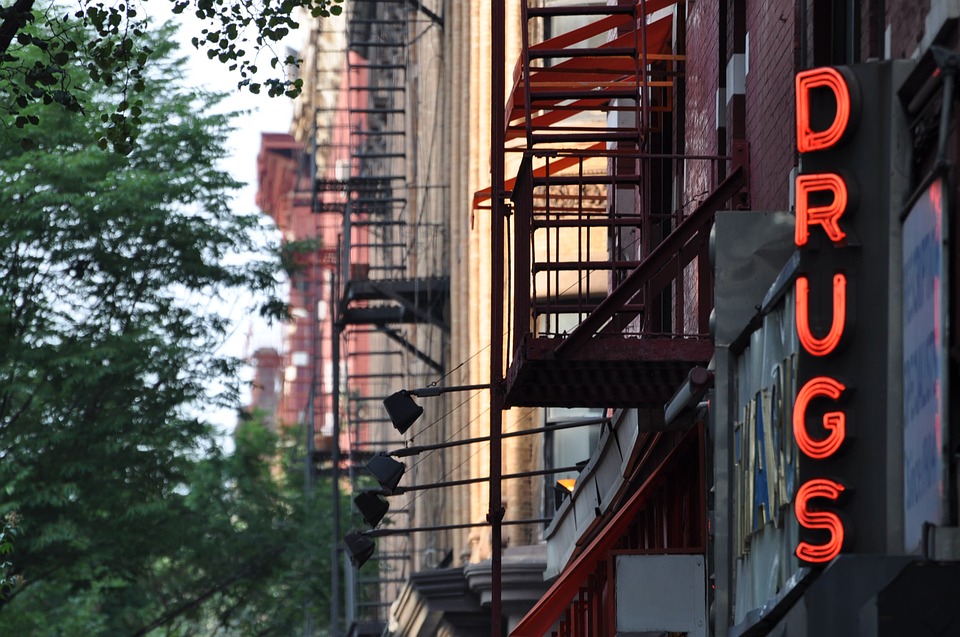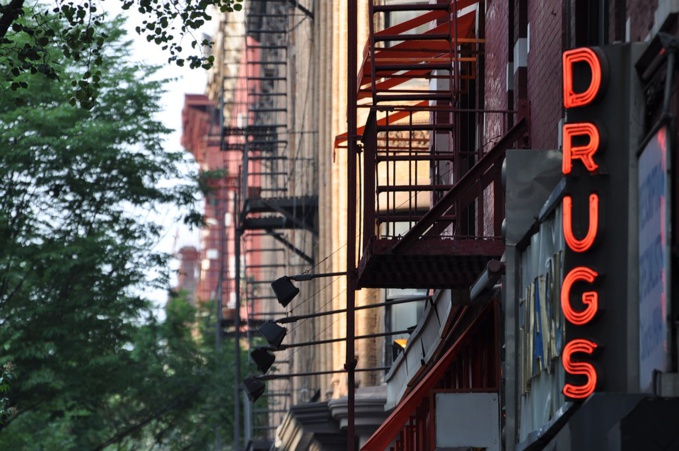During the 73rd session of the UN General Assembly, US President Donald Trump drew attention of the world community to growth of drug addiction: drugs continue to take lives in the United States and around the world, and illicit drug trafficking is associated with crime, terrorism and corruption. “For the health of society and national security, it is vital to fight drug addiction,” CBS quotes Trump, who also said it’s important to fight cartels.
President of the United States raised this question for a reason: his country is experiencing the strongest opioid crisis, which affects both the citizens and the economy of the United States.
Over the past two decades, the number of deaths due to overdose has increased significantly in the country. The National Institute on Drug Abuse indicates that the abuse of opioid painkillers began as early as the 90s of the 20th century, when manufacturers “managed to convince” doctors that such substances were not addictive, therefore they began to be prescribed more often.
The most striking example of such a drug is Oxycontin (the active ingredient is oxycodone). According to the non-governmental organization Сenter on addiction, sales of the drug have increased from $ 48 million to $ 1.1 billion only in the period from 1996 to 2000, and the number of prescriptions written for it has grown tenfold from 1997 to 2002.
Due to popularity of opioid painkillers, the number of overdose with a fatal outcome has increased (deaths by taking drugs as well as switching to drugs). According to the US Centers for Disease Control and Prevention (CDS), the number of fatal overdoses has more than tripled from 2000 to 2016 — from 3 to 13 people per 100,000 population. The statistics include both addicts to heroin and synthetic opioids (fentanyl, tramadol, methadone, etc.), which, in particular, can be prescribed by a doctor.
The situation continues to deteriorate. As The New York Times noted, in 2017, the number of deaths in the United States has increased by 10% compared with the previous year, reaching 72,000 people and becoming an anti-record for the country.
How much did the pharmacological industry influence drug addiction? The National Institute on Drug Abuse calls painkillers prescribed by doctors as one of the reasons. Experts note that 21% to 29% of patients abuse drugs, and about 80% of heroin addicts started with painkillers.
According to the report of the Market Research Engine, the market for painkillers (of all types) will be estimated at $ 83 billion by 2024, demonstrating stable growth. Moreover, the growing popularity of opioid painkillers, VOX reports, can be explained by marketing activity of pharmaceutical companies.
Not only pharmaceutical representatives personally communicate with doctors responsible drugs prescription, but also provide doctors with various bonuses: free lunches, payment for travel or payment of money under various pretexts. Against this background, rate of opioid painkillers prescriptions is steadily climbing up.
Not only the epidemic drug trafficking lead to an increase in mortality due to overdoses, but also poses a threat to the health of society as a whole.
According to the National Institute on Drug Abuse, the increase in the number of drug addicts is accompanied by the spread of HIV, hepatitis C and congenital abnormalities. The institute also notes that excessive use of painkillers alone costs the US $ 78.5 billion a year - this amount includes both the cost of treatment for addiction, and the decline in efficiency and possible wrongdoing by the addict.
But this is only part of the problem. Overall, the opioid crisis in the United States, according to the Worldfinance portal, costs the country $ 500 billion annually, accompanied by a drop in efficiency, crime, and treatment costs for the dependent.
source: nytimes.com, worldfinance.com, vox.com, forbes.com
President of the United States raised this question for a reason: his country is experiencing the strongest opioid crisis, which affects both the citizens and the economy of the United States.
Over the past two decades, the number of deaths due to overdose has increased significantly in the country. The National Institute on Drug Abuse indicates that the abuse of opioid painkillers began as early as the 90s of the 20th century, when manufacturers “managed to convince” doctors that such substances were not addictive, therefore they began to be prescribed more often.
The most striking example of such a drug is Oxycontin (the active ingredient is oxycodone). According to the non-governmental organization Сenter on addiction, sales of the drug have increased from $ 48 million to $ 1.1 billion only in the period from 1996 to 2000, and the number of prescriptions written for it has grown tenfold from 1997 to 2002.
Due to popularity of opioid painkillers, the number of overdose with a fatal outcome has increased (deaths by taking drugs as well as switching to drugs). According to the US Centers for Disease Control and Prevention (CDS), the number of fatal overdoses has more than tripled from 2000 to 2016 — from 3 to 13 people per 100,000 population. The statistics include both addicts to heroin and synthetic opioids (fentanyl, tramadol, methadone, etc.), which, in particular, can be prescribed by a doctor.
The situation continues to deteriorate. As The New York Times noted, in 2017, the number of deaths in the United States has increased by 10% compared with the previous year, reaching 72,000 people and becoming an anti-record for the country.
How much did the pharmacological industry influence drug addiction? The National Institute on Drug Abuse calls painkillers prescribed by doctors as one of the reasons. Experts note that 21% to 29% of patients abuse drugs, and about 80% of heroin addicts started with painkillers.
According to the report of the Market Research Engine, the market for painkillers (of all types) will be estimated at $ 83 billion by 2024, demonstrating stable growth. Moreover, the growing popularity of opioid painkillers, VOX reports, can be explained by marketing activity of pharmaceutical companies.
Not only pharmaceutical representatives personally communicate with doctors responsible drugs prescription, but also provide doctors with various bonuses: free lunches, payment for travel or payment of money under various pretexts. Against this background, rate of opioid painkillers prescriptions is steadily climbing up.
Not only the epidemic drug trafficking lead to an increase in mortality due to overdoses, but also poses a threat to the health of society as a whole.
According to the National Institute on Drug Abuse, the increase in the number of drug addicts is accompanied by the spread of HIV, hepatitis C and congenital abnormalities. The institute also notes that excessive use of painkillers alone costs the US $ 78.5 billion a year - this amount includes both the cost of treatment for addiction, and the decline in efficiency and possible wrongdoing by the addict.
But this is only part of the problem. Overall, the opioid crisis in the United States, according to the Worldfinance portal, costs the country $ 500 billion annually, accompanied by a drop in efficiency, crime, and treatment costs for the dependent.
source: nytimes.com, worldfinance.com, vox.com, forbes.com



















